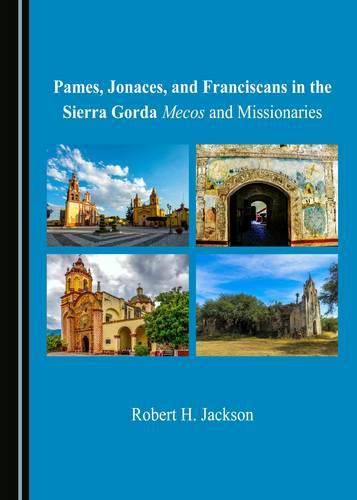Readings Newsletter
Become a Readings Member to make your shopping experience even easier.
Sign in or sign up for free!
You’re not far away from qualifying for FREE standard shipping within Australia
You’ve qualified for FREE standard shipping within Australia
The cart is loading…






In the mid-sixteenth century, the Spanish faced a prolonged conflict in Mexico known as the Chichimeca War (1550-1600) beyond the porous cultural frontier between the sedentary indigenous populations of central Mexico and the bands of nomadic hunters and gatherers collectively known by the derogatory Nahuatl term Chichimeca or Mecos . Franciscan, Dominican, and Augustinian missionaries developed methods and an organizational scheme to evangelize the sedentary populations of central Mexico, but this did not work well beyond the Chichimeca frontier where missions often proved to be ephemeral. Moreover, the missionaries uncovered evidence of the persistence of pre-Hispanic religious beliefs as they also did in central Mexico. In many cases, the missionaries focused their attention on the colonies of sedentary indigenous peoples established beyond the frontier. This study outlines efforts over more than 200 years to evangelize the Pames and Jonaces in a huge territory known as the Sierra Gorda that covered parts of the modern states of Queretaro, Hidalgo, Estado de Mexico, Guanajuato, and San Luis Potosi, and involved Franciscan, Dominican, Augustinian, and Jesuit missionaries. It documents the last missionary impulse spurred by the project of Jose de Escandon and a new group of Franciscan missionaries to get the Pames and Jonaces to adopt a sedentary lifestyle after two centuries of failed efforts.
$9.00 standard shipping within Australia
FREE standard shipping within Australia for orders over $100.00
Express & International shipping calculated at checkout
In the mid-sixteenth century, the Spanish faced a prolonged conflict in Mexico known as the Chichimeca War (1550-1600) beyond the porous cultural frontier between the sedentary indigenous populations of central Mexico and the bands of nomadic hunters and gatherers collectively known by the derogatory Nahuatl term Chichimeca or Mecos . Franciscan, Dominican, and Augustinian missionaries developed methods and an organizational scheme to evangelize the sedentary populations of central Mexico, but this did not work well beyond the Chichimeca frontier where missions often proved to be ephemeral. Moreover, the missionaries uncovered evidence of the persistence of pre-Hispanic religious beliefs as they also did in central Mexico. In many cases, the missionaries focused their attention on the colonies of sedentary indigenous peoples established beyond the frontier. This study outlines efforts over more than 200 years to evangelize the Pames and Jonaces in a huge territory known as the Sierra Gorda that covered parts of the modern states of Queretaro, Hidalgo, Estado de Mexico, Guanajuato, and San Luis Potosi, and involved Franciscan, Dominican, Augustinian, and Jesuit missionaries. It documents the last missionary impulse spurred by the project of Jose de Escandon and a new group of Franciscan missionaries to get the Pames and Jonaces to adopt a sedentary lifestyle after two centuries of failed efforts.